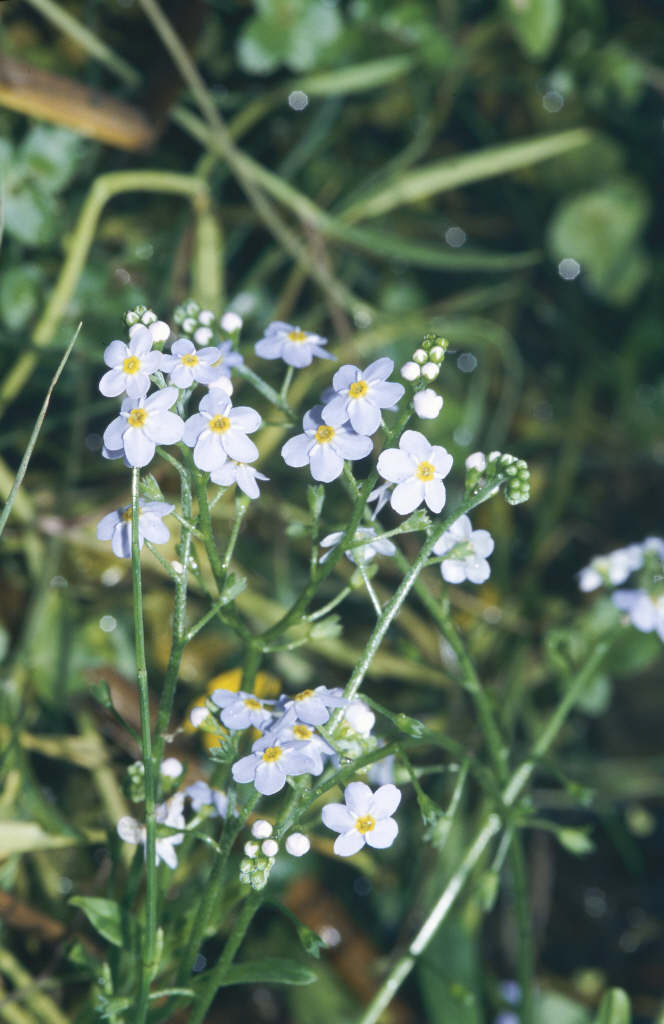Myosotis scorpioides
water forget-me-not
A rhizomatous, marginal aquatic perennial, to 30cm high, with upright or semi-upright stems and narrow, oblong mid-green leaves to 10cm long, and bright blue flowers, to 8mm across, with a pink, white or yellow eye, produced in cymes in early summer
Other common names
love-memarsh forget-me-not
see moremouse-ear
mouse-ear scorpion grass
snake grass
ysforpionllys y gors
Synonyms
Myosotis palustrisSize
Ultimate height
0.1–0.5 metresTime to ultimate height
2–5 yearsUltimate spread
0.1–0.5 metresGrowing conditions
Moisture
Poorly–drainedpH
Acid, Alkaline, NeutralColour & scent
| Stem | Flower | Foliage | Fruit | |
| Spring | Green | |||
|---|---|---|---|---|
| Summer | Blue | Green | ||
| Autumn | Green | |||
| Winter | Green |
Position
- Full sun
- Partial shade
Aspect
South–facing or West–facing or East–facing
Exposure
Exposed or Sheltered Hardiness
H6Botanical details
- Family
- Boraginaceae
- Native to GB / Ireland
- Yes
- Foliage
- Semi evergreen
- Habit
- Clump forming
- Genus
Myosotis can be annuals, biennials or perennials, with simple leaves and clusters of small, salver-shaped blue, yellow or white flowers, with yellow or white eyes, in spring or early summer
- Name status
Correct
- Plant range
- Temp. N. Hemisphere
How to grow
Cultivation
Grow in wet soil at pool margins, in water no deeper than 10cm, in full sun or partial shade. See pond plants and bog gardens for further advice
Propagation
Propagate by seed sown in-situ, in mud at pond margins or in containers of moist compost in a coldframe in spring, or by division in spring - replant in mud or in baskets in shallow water
Suggested planting locations and garden types
- Cottage and informal garden
- Wildlife gardens
Pruning
Cut back after flowering
Pests
Generally pest-free
Diseases
May be susceptible to powdery mildews and downy mildews
Get involved
The Royal Horticultural Society is the UK’s leading gardening charity. We aim to enrich everyone’s life through plants, and make the UK a greener and more beautiful place.
